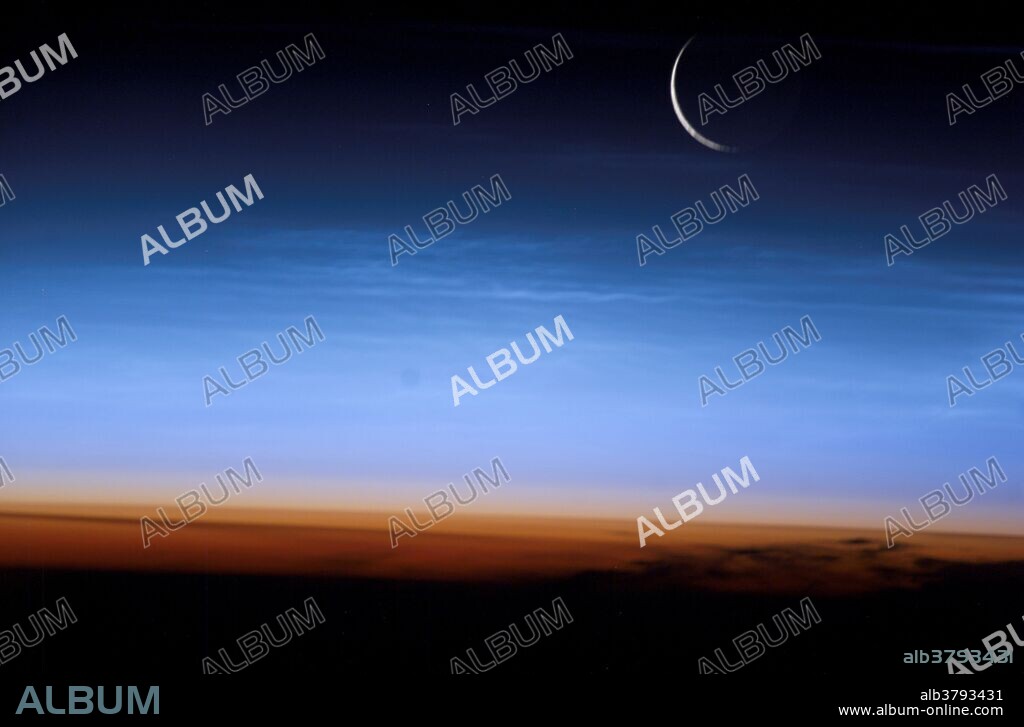alb3793431
Noctilucent Clouds, ISS Image

|
Añadir a otro lightbox |
|
Añadir a otro lightbox |



¿Ya tienes cuenta? Iniciar sesión
¿No tienes cuenta? Regístrate
Compra esta imagen.
Selecciona el uso:

Título:
Noctilucent Clouds, ISS Image
Descripción:
Ver traducción automática
Noctilucent clouds and a setting crescent Moon, seen from the International Space Station. Noctilucent clouds are very high clouds that look like cirrus clouds, but are much higher than clouds that we observe every day. They are optically thin and can only be observed during twilight hours, when the sun is just below the horizon and only shines on the uppermost atmosphere. In this image, the limb of the Earth at the bottom transitions into the orange-colored troposphere, the lowest and most dense portion of the Earth's atmosphere. The troposphere ends abruptly at the tropopause, which appears in the image as the sharp boundary between the orange- and blue-colored atmosphere. The silvery-blue noctilucent clouds are far above this boundary. June to July is the season for noctilucent clouds in the northern hemisphere; they form in the polar mesosphere, generally above 50 degrees latitude. The lower three layers of the atmosphere (from bottom) are the troposphere (orange) and the stratosphere and mesosphere (pale blue). Above these, the atmosphere fades into the darkness of space. Photographed by astronaut Ed Lu on July 27, 2003, over Mongolia in central Asia.
Crédito:
Album / Science Source / NASA/Johnson Space Center
Autorizaciones:
Modelo: No - Propiedad: No
¿Preguntas relacionadas con los derechos?
¿Preguntas relacionadas con los derechos?
Tamaño imagen:
4200 x 2766 px | 33.2 MB
Tamaño impresión:
35.6 x 23.4 cm | 14.0 x 9.2 in (300 dpi)
Palabras clave:
 Pinterest
Pinterest Twitter
Twitter Facebook
Facebook Copiar enlace
Copiar enlace Email
Email
